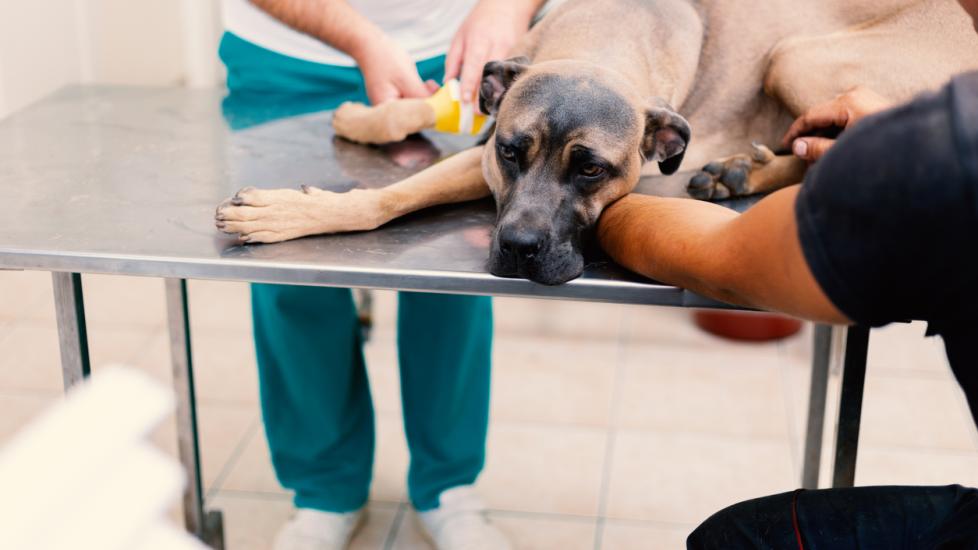Dogs, with their boundless energy and unwavering loyalty, have long been cherished companions for humans. However, like any living creature, dogs can experience a variety of emotions, including shock—a response to an unexpected or highly stressful event that triggers the body’s natural fight-or-flight mechanism. Understanding what shock looks like in dogs is crucial for pet owners to recognize when their furry friend needs immediate care. In this article, we delve into the various types of shocks that can affect our canine friends, how to identify them, and most importantly, how to provide appropriate treatment and support.
Types of Shock in Dogs:
1. Hypovolemic Shock: This type of shock occurs due to significant blood loss or fluid depletion, leading to low blood volume and inadequate circulation. It may be caused by trauma such as a severe cut or puncture wound, internal bleeding from surgery or injury, or dehydration after prolonged periods without water. Symptoms include pale gums, weakness, rapid heart rate, decreased urine output, and lethargy.
2. Cardiogenic Shock: As the name suggests, cardiogenic shock stems from issues with the dog’s cardiovascular system. Heart failure, myocardial infarction (heart attack), arrhythmias, or congenital heart defects can lead to reduced cardiac output and insufficient blood flow throughout the body. Signs include difficulty breathing, coughing, and fluid buildup in the lungs.
3. Distributive Shock: Here, the problem lies not with the amount of blood but with its distribution within the circulatory system. Causes might include sepsis (blood infection), anaphylaxis (severe allergic reaction), or extreme pain. The symptoms often mimic those seen in hypovolemic shock but can also involve fever, confusion, and disorientation.
4. Obstructive Shock: An obstruction in the major blood vessels prevents normal blood flow, which could result from a thromboembolism (blood clot moving through the bloodstream) or compression on the vena cava (the large vein returning deoxygenated blood to the heart). Affected dogs may show signs of abdominal swelling, collapse, and sudden paralysis.
Identifying Shock in Your Dog:
Recognizing the early signs of shock is critical. Look out for:
– Weakness or listlessness
– Rapid panting or shallow breathing
– Decreased appetite
– Restlessness or anxiety
– Pale or bluish gums
– A weak pulse or irregular heartbeat
– Lack of interest in drinking water or urinating less frequently
– Collapse or inability to stand
Providing Emergency Care:
If you suspect your dog is experiencing shock, it’s important to act promptly and seek veterinary assistance immediately. While waiting for professional help, follow these steps:
- Keep Them Warm: Maintain a stable body temperature by wrapping your dog in a blanket if they are shivering or showing signs of coldness.
- Monitor Breathing: If necessary, clear any obstructions from the airway and ensure unobstructed breathing.
- Limit Physical Activity: Avoid making the dog walk or run until you know they are stable; movement can exacerbate shock.
- Reassurance: Stay calm around your pet and offer gentle reassurance. Some dogs find comfort in hearing familiar voices or being held gently.
- Prevent Further Blood Loss: Apply direct pressure to any open wounds to stop excessive bleeding.
- Do Not Give Medication: Unless specifically instructed by your vet, do not administer any medication at home.
- Record Observations: Jot down details about when you noticed changes in behavior and any potential causes that come to mind.
Prevention and Management:
To prevent situations that might lead to shock, always keep your dog safe and supervised. Ensure they have regular check-ups with the veterinarian, maintain a healthy diet, and practice good hygiene to reduce the risk of infections. Additionally, educate yourself on first aid procedures specific to pets so that you can react appropriately in emergencies.
In conclusion, recognizing and responding swiftly to shock in dogs can mean the difference between life and death. By understanding the different types of shock and knowing how to spot the warning signs, pet owners can provide essential support before seeking professional medical attention. Always prioritize your dog’s well-being and never hesitate to call your veterinarian if you suspect something is wrong. After all, every second counts in ensuring the health and happiness of our beloved canine companions.
